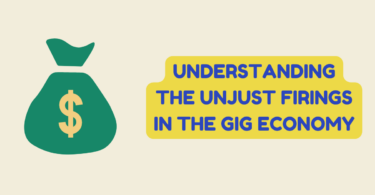
Ways to Determine if Now is the Best Time to Launch Your Business
Do you have a suggestion for a new product or service? It’s easy to get carried away with your vision of all the sales, notoriety, and success that your offering will bring. A product launch, like any other business venture, takes time and meticulous planning. Rushing to market without all of your ducks in a row is a recipe for catastrophe.
Even in the best of times, business ideas are often veiled with ambiguity. You might think it’s best to put any such plans on hold for the time being, given the unprecedented global instability.
In actuality, now might be the finest time to launch ever. Your company idea could be exactly what’s required. Given the growing demand for new methods to work and sell in light of health concerns and the desire for new ways to obtain in-demand products.
Here’s how to figure out if now is the best moment to do it.
1. The Readiness of the Product
In general, the optimal time to launch your product is as soon as it is ready. As soon as the product is functional, it should be released. All it has to do is carry out the given function. When it’s already on the market, do all the tweaking and perfecting.
Before you start modifying your product, you may start benefiting from it. Profit from the excitement of your customers. The refined versions will be sold later.
Of course, this isn’t to mean you should release anything shoddy to the public. It describes a unique approach to product creation. The process of product development should never cease. It’s a lifelong quest for perfection that will never be realized.
Given this, why not profit as soon as the product is marketable? We’d still be flipping open our Motorolas if Apple waited until the first iPhone could accomplish what the latest ones can.
2. Sales Cycles
It makes a difference what time of year, month, or even week you choose. Consider the following questions:
- Is there a specific period when your target market will want to use the product?
- When do you think they’ll be most interested in your product?
According to research, the greatest day to launch a product is Tuesday. Consumers are excessively focused on the approaching week on Mondays. People look forward to the weekend on Fridays. On Tuesdays, you may be sure that difficulties from the previous week have been resolved. It also allows you adequate time to share your message and respond to questions (a total of three days).
The optimal time of year to introduce a seasonal product is determined by the product itself. Self-improvement goods might help you stick to your New Year’s resolutions in January. Spring, as well as summer, are said to be the ideal seasons for outdoor products that are produced with green and sustainable raw materials.
It’s also important to consider the time of year. It’s not a good idea to reveal your goods right before a significant holiday. When surrounded by family and friends, people tend to journey back home and have no time to read.
3. Your Schedule
Your ideal launch time will be determined by your personal schedule. Schedule the launch for when you have the least amount of work on your plate. In this way, you can concentrate on the time and effort required for the launch. Focusing on product releases over other concerns makes it reasonable. You only get one chance to launch a successful product!
Expect technical difficulties, customer service concerns, and other unforeseen demands on your time. It’s critical to have everyone on board. This includes yourself, at the helm, ready to execute the launch flawlessly, along with the right sourcing company like matchsourcing.com. So that there is no delay in getting the product in bulk if it hits the target sale.
4. Launch Conditions
To have a successful product launch, you must achieve certain requirements. To justify excitement for your new product, first, build your brand’s reputation. If you haven’t previously given your customer base a reason to trust you, now is the time to start. Customers will be more likely to take a chance on a product that they know will suit their demands.
Make sure your business infrastructure is ready for the increase in sales. Do you have a mechanism in place for distributing your products? Is your payment system free of errors? Do you have customer care and tech support personnel on standby? You can count on success if you expect it.
Finally, consider the launch’s timing with respect to the performance of existing items. When another of your products is at the pinnacle of its popularity, it’s the best time to introduce a new one. You may use that momentum to propel you into the following round of sales.
5. Marketing and Communication
The greatest method to ensure that your launch goes smoothly is to start with a distinctive and innovative product. It’s an issue of marketing and communication after that. Maintain contact with your target audience. Use email and social media to generate buzz about your product, and be there to help it launch.
Be prepared for the unexpected. Prepare to deal with audience questions, complaints, and other feedback. Maintain your product’s integrity, but search for ways to incorporate input as soon as possible. One of the most important things is to know what worked and what didn’t. The day after your huge launch, you begin planning for the next one.
Final Thoughts
Starting a business can be difficult, but it can also be extremely rewarding. There’s no assurance that things will go according to plan, so it’s a good idea to “expect the unexpected.” However, there are steps you may do to improve your chances of success.
First and foremost, ensure that you are prepared. If you want to take advantage of market possibilities when they arise, you must be prepared. When there is a market need, you must ask for the sale and be prepared to deliver.
After that, you must finish your research. Take the time to figure out if customers desire what you’re selling and if there’s a product-market fit. Find out who your customers are and what they care about. Make sure your solution caters to their demands, and that they can see and comprehend the value proposition.






